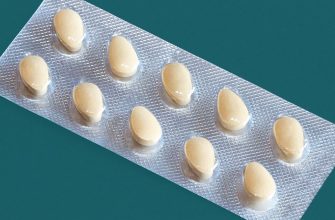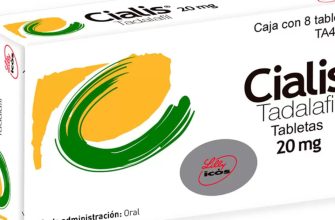Cialis can help reduce BPH symptoms, but it doesn’t shrink the prostate itself. This means you might experience improved urinary flow and less frequent nighttime urination, but the underlying prostate enlargement remains.
The medication works by relaxing the muscles in the bladder and prostate, easing the blockage and improving urine passage. Think of it as improving the plumbing, not removing the obstruction entirely. Expect noticeable improvements in urinary function for many men, but understand this isn’t a cure.
Studies show Cialis provides significant relief for a large percentage of men with BPH-related symptoms. However, individual responses vary. Your doctor can assess your specific situation and determine if Cialis is a suitable treatment option for you. They’ll also discuss alternative approaches if needed.
Remember: Always consult your physician before starting any new medication, especially if you have pre-existing health conditions or are taking other drugs. They can help you weigh the benefits and risks to create a personalized treatment plan. Proper diagnosis and ongoing monitoring are key to managing BPH effectively.
Does Cialis Shrink BPH?
No, Cialis doesn’t shrink the prostate gland itself. It primarily treats symptoms of benign prostatic hyperplasia (BPH) by relaxing muscles in the bladder and prostate, improving urine flow.
While Cialis doesn’t reduce prostate size, many men experience significant symptom relief, such as reduced urinary frequency, urgency, and nighttime awakenings to urinate. This improvement in symptoms is often enough to improve quality of life.
It’s crucial to consult a doctor. They can accurately diagnose BPH, rule out other conditions, and determine if Cialis is the right treatment option for you. Other medications and procedures exist for managing BPH, and your doctor will help you choose the best approach.
Remember, Cialis is a prescription medication, and its use should be guided by a healthcare professional. They will consider your medical history and other medications before prescribing it. Discuss any potential side effects with your doctor.
For severe BPH cases, surgery or other minimally invasive procedures might be necessary. Your doctor will assess the severity of your condition and recommend the appropriate course of action.
Understanding Cialis’s Effects on Prostate Size
Cialis doesn’t directly shrink an enlarged prostate (BPH). Its impact is indirect, focusing on improving urinary symptoms associated with BPH.
Cialis primarily relaxes the muscles in the bladder and prostate. This relaxation eases urine flow, improving symptoms like frequent urination, weak stream, and nighttime urination. While this doesn’t reduce prostate size, the improved urinary function often provides significant relief for BPH sufferers.
- Improved Urine Flow: Cialis’s muscle-relaxing properties allow for a smoother, more efficient emptying of the bladder.
- Reduced Urinary Symptoms: Many men experience a marked decrease in the frequency and urgency of urination after starting Cialis.
- No Direct Prostate Size Reduction: It’s crucial to understand that Cialis does not directly reduce the size of the prostate gland itself. Other treatments, like surgery or medication specifically targeting prostate size reduction, might be considered for that.
To determine the best course of action for your BPH, consult a healthcare professional. They can assess your specific situation, considering your symptoms and overall health, to recommend appropriate treatment options.
- Discuss your symptoms: Provide detailed information about your urinary problems to your doctor.
- Undergo a physical exam: This will help your doctor evaluate your prostate and rule out other potential issues.
- Consider additional tests: Depending on your situation, your doctor might order tests like a PSA blood test or a uroflowmetry study.
Remember, Cialis offers symptom relief, not a cure or prostate size reduction. Open communication with your doctor is key to finding the most suitable management strategy for your BPH.
Cialis vs. BPH: Symptom Improvement vs. Size Reduction
Cialis primarily treats BPH symptoms, not the prostate’s size directly. It relaxes the bladder neck muscles and prostate, improving urine flow. Studies show significant improvement in symptoms like frequent urination and nighttime awakenings.
However, Cialis doesn’t shrink the prostate. If significant prostate enlargement persists despite symptom relief, your doctor might recommend other treatments like alpha-blockers or surgery. These options directly address prostate size reduction.
Think of it this way: Cialis manages the plumbing, while other treatments address the size of the structure itself. Both approaches may be necessary depending on the severity of your BPH.
Always discuss treatment options with your doctor. They can assess your specific situation and recommend the most suitable approach, possibly combining Cialis with other therapies for optimal results.
Regular monitoring of prostate size and symptoms is crucial for long-term management of BPH. Your doctor will guide you through the process and adjust treatment as needed.
Alternative Treatments for BPH and Prostate Size Reduction
Consider lifestyle changes. Regular exercise, a healthy diet low in saturated fats, and maintaining a healthy weight can positively impact BPH symptoms. Studies show these modifications often improve urinary flow and reduce nighttime urination.
Explore herbal remedies. Saw palmetto, a common herbal supplement, shows promise in reducing BPH symptoms for some men. However, always consult your doctor before starting any herbal supplement, as they can interact with other medications.
Try acupuncture. Some men find relief from BPH symptoms through acupuncture. This traditional Chinese medicine technique involves inserting thin needles into specific points on the body to stimulate energy flow and reduce inflammation.
Investigate minimally invasive procedures. Procedures like transurethral microwave thermotherapy (TUMT) or transurethral needle ablation (TUNA) use heat or radiofrequency energy to shrink the prostate, minimizing the need for major surgery. These are less invasive than traditional surgery, offering faster recovery times.
Discuss alpha-blockers with your physician. These medications relax the muscles in the bladder and prostate, improving urinary flow. They don’t shrink the prostate, but they effectively alleviate symptoms.
Consider 5-alpha reductase inhibitors. These medications reduce the size of the prostate over time, offering long-term symptom relief. Finasteride and dutasteride are examples of this medication class. However, they come with potential side effects and require a physician’s prescription.
Remember to discuss all treatment options with your doctor to determine the best approach for your individual needs and health condition. They can help you weigh the benefits and risks of each treatment and create a personalized care plan.









